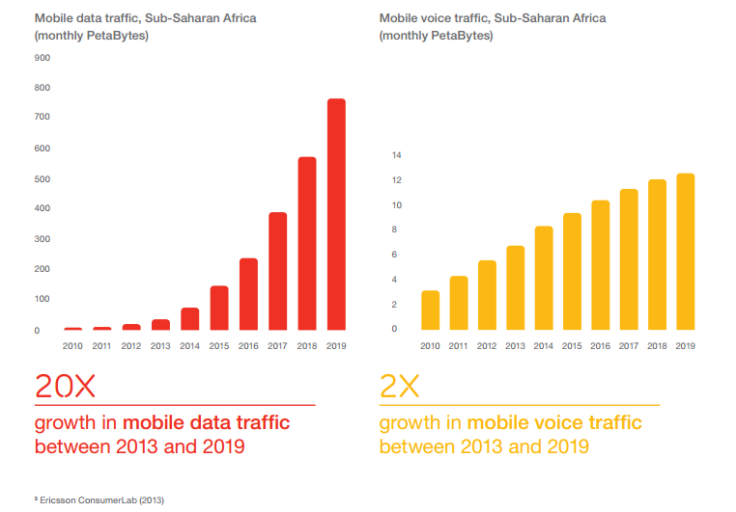Mobile Phone Use On The Rise In Africa, But Analysts At World Economic Forum Warn That Governments Must Keep Up

Mobile subscriptions in Africa are set to double over the next decade, spurring economic growth in one of the world’s major emerging markets. But the booming industry also requires African policymakers to do their part.
“We expect data to keep growing dramatically, and to facilitate that you need more spectrum to handle that growth,” Mortimer Hope, Africa director at GSMA, a mobile industry trade group, told Reuters at the World Economic Forum Africa held in Cape Town this week. He explained that officials need to take steps like cutting taxes on Web-enabled phones to make them more accessible, and develop stronger plans for broadband access.
“The issue is that those plans very often just sit on a shelf, not being implemented,” he said.
According to GSMA, sub-Saharan Africa has a mobile penetration rate of 39 percent. By 2020 this will hit about 48.7 percent, and reach 80 percent within a decade.
In the last few years Africa has experienced massive economic growth, a booming middle class and increased access to technology. More and more people are buying cell phones and getting connected to the Internet without need for a landline or computer, and the continent is slowly catching up with other regions. Services from shopping to job-hunting can be done using SMS messages alone, and analysts have estimated the mobile money market in Africa could be worth $1.3 billion by 2019.

It’s a positive story, and smartphones are getting more affordable. But while some countries such as Nigeria and Ghana have started collaborating with private companies to boost broadband access, there is still a long way to go.
“Even though some markets in the region show strong growth, poor network coverage is a cause for concern,” reads a recent report from Ericsson. This is especially true in rural areas where operators lag behind more populated urban centers, as well as very densely populated areas that can’t handle the increase in data usage.
“Rural areas are often seen as having low returns, but as connectivity continues to increase in importance, serving these places will be paramount in helping bridge the current digital divide,” the report says.
© Copyright IBTimes 2024. All rights reserved.






















